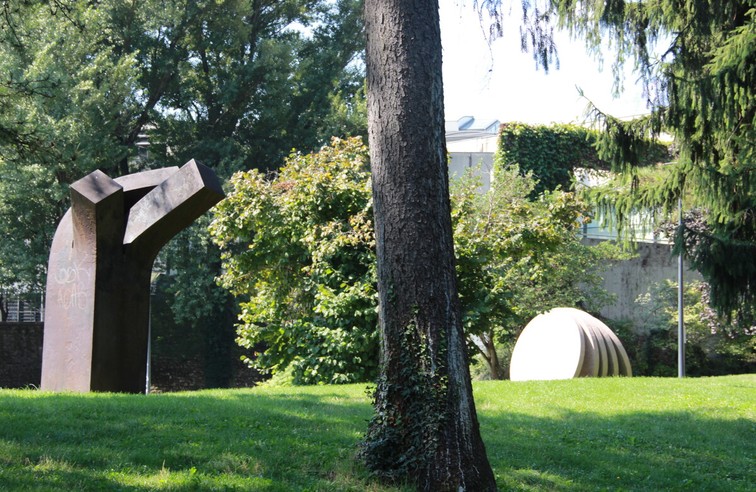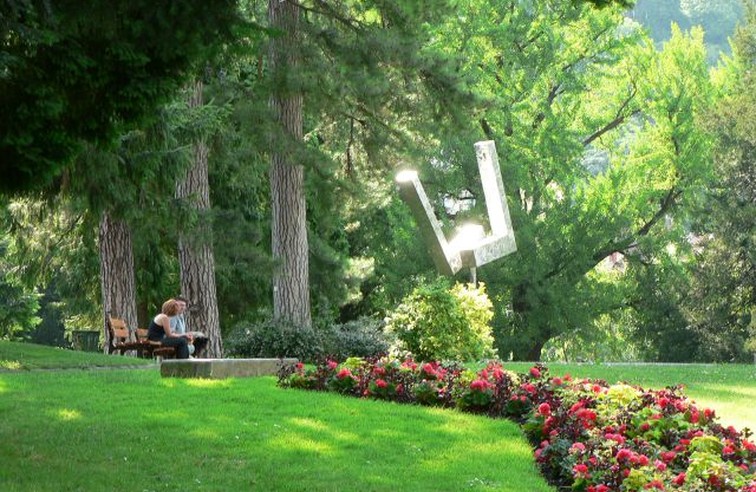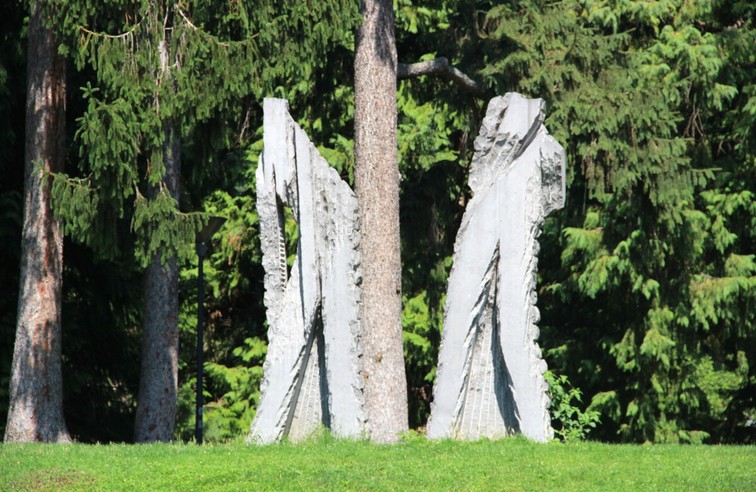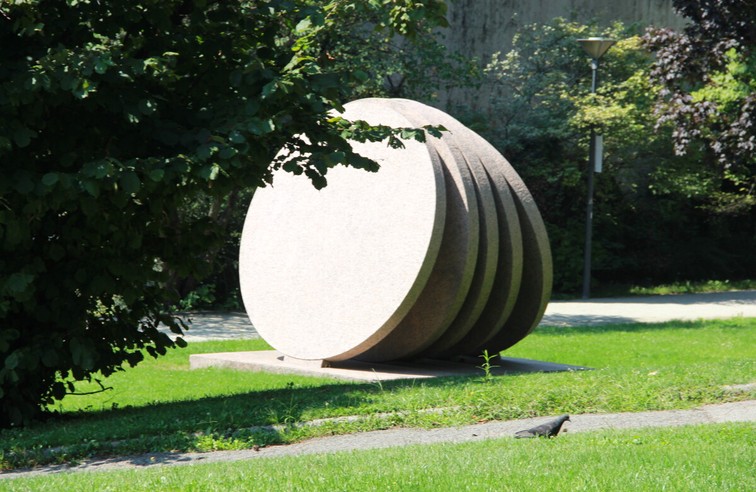Parc Michallon
The Mitterand esplanade and the Michallon park, near the museum of Grenoble, become the exceptional setting for 15 sculptures that create a free, outdoor continuation of the museum’s 20th century art collection.
Read more Read less
This park, which is nothing more than the contemporary form of 16th century sculpture gardens, offers a pleasant environment where art and nature come together.
The museum of Grenoble’s sculpture park follows the precedent set by the Middelheim museum in Anvers, followed by the Kröller-Müller Museum in Otterlo, Holland, of the Louisiana Museum in Humlebaeck, near Cologne, and the garden of the Maeght Foundation in Saint Paul de Vence.
Work on the garden began in 1988 and it sprawls over 16,000 m2 where towering trees and rare plant specimens provide natural accents to the remains of the city’s old ramparts.
In front of the museum, the monumental sculpture by Alexander Calder, Monsieur Loyal, greets visitors. Its triangular steel plates, which are bolted together, add a sort of dynamic energy to the park. Further on, the steel structure, North Star, designed by Mark di Suvero, springs towards the sky with seemingly fantastic momentum, its tip reaching 20 meters overhead. Next to the Island Tower, in front of the rampart arches, stands the fine-silhouetted bronze sculpture by Marcel Antoine Gimond, Young Girl Standing.
At the west entrance to the park stand five pink granite discs stacked against each other, symbolizing the Danube and its tributaries. Then we come to Orpheus emerging from trees that look similar to him, a bronze work by Ossip Zadkine. At the far end of the ditch, opposite the museum room dedicated to American art, the Richard Nonas’ work Transit West (for the 36 Albanians…) stands. This sculpture is made up of six steel beams laid out in triangles, echoing the three trees surrounding it.
Moving back up the slope, Zuhaitz, the work of Euardo Chillida, is a steel “tree” whose trunk contrasts with its budding branches. Along the same axis, Couple by Eugene Dodeigne, imposes its monumentality and force through its strong lines carved in Soignies stone. Further down, the bronze Rolande, Nude Woman Standing by Robert Wlérick occupies a wide space with its sensuality and harmony.
A little further, moving towards the Isere river, George Rickey has installed his work entitled Conversation, whose upper parts, attached to a mast, are mobile: the movements of this stainless steel sculpture are “a response to the wind” and “ to the light.”
In the north corner of the park, the sculpture Monoforme 26 by Gottfried Honegge is made of modular elements and reminds us of the Arch of Triumph, but opens onto the Chartreuse mountains.
The path then takes us to a group of pine trees, where Morice Lipsi’s La Grande Vague stands, its dense and vigorous forms carved out of pink granite.
Overlooking the downwind path, Three Indeterminate Lines by Bernard Venet, offers an illusion of light flexibility with its steel beams bent into spirals.
At the angle of the ditch, the forceful construction by Anthony Caro, Mountain Song, pushes against the wall: the weightiness of the sculpture, accented by the cascading descent of the steel plates, seems to be contradicted by the open space below the sculpture.
At the southern entrance of the park stands Cecile, Woman’s Torso, in patina by Leon Driver.
-
Parc Michallon
avenue Maréchal Randon
38000 GRENOBLE
Route
- Languages: Fr
Rates
Opening periods
All year round, daily.
Equipments and characteristics
- Pets refused
Access
Public transport: tramway line B stop Notre-Dame, Museum
- Latitude: 45.198823
- longitude: 5.735035




